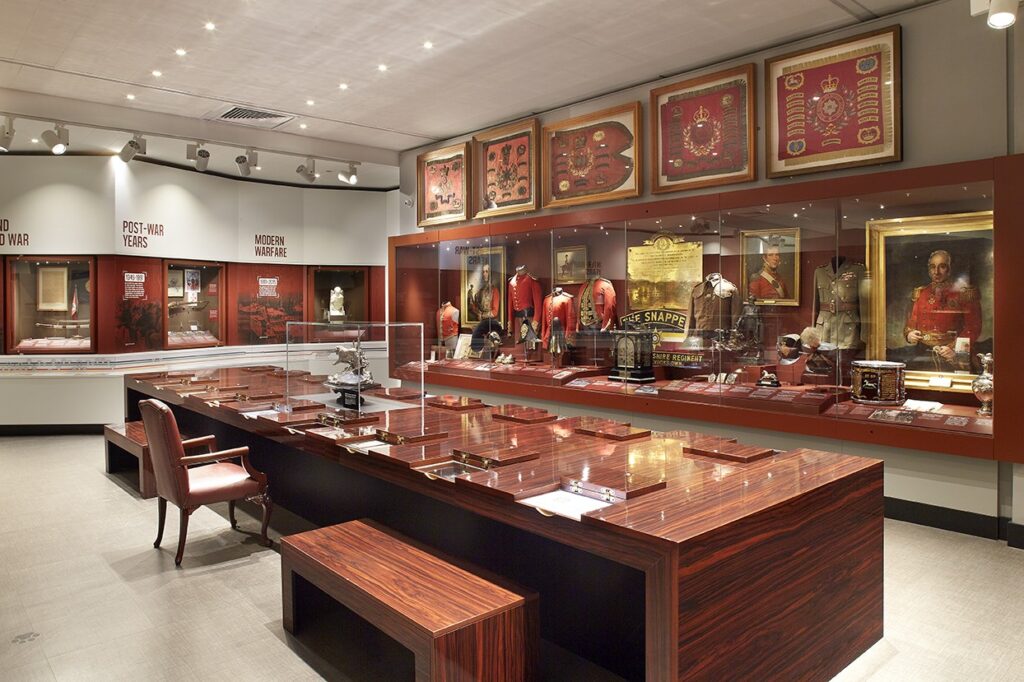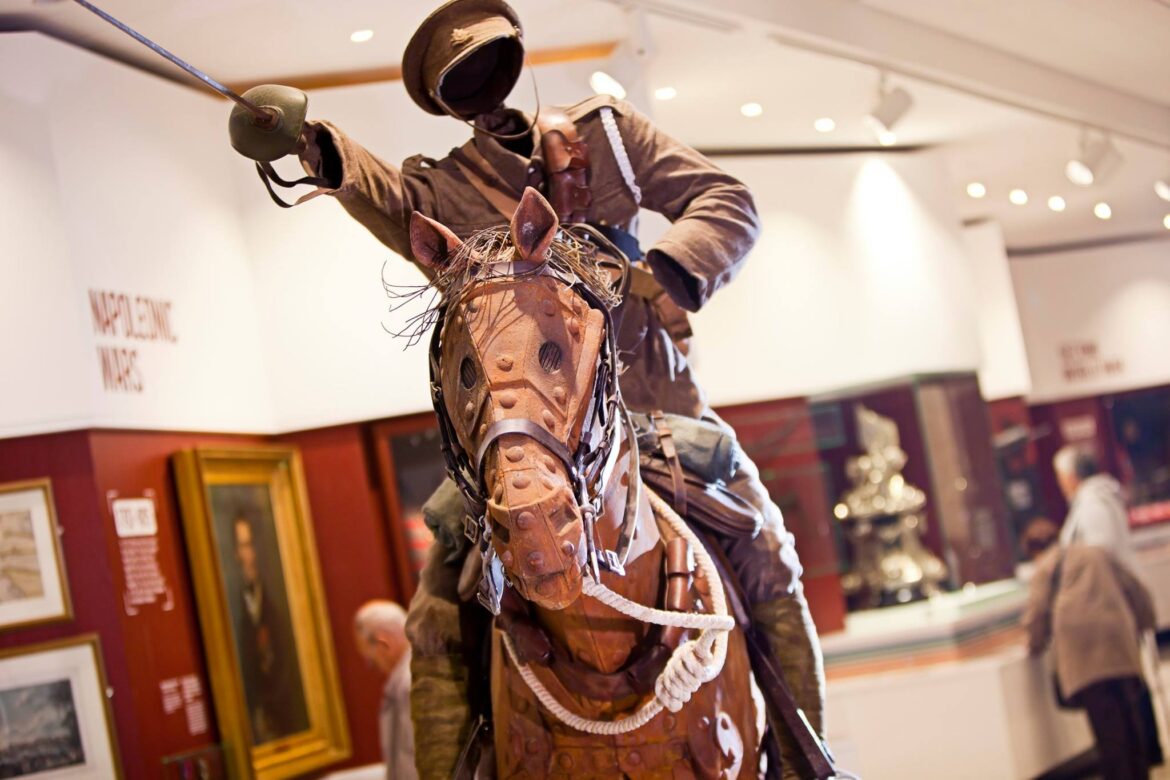The city of York is world-famous for its medieval streets, Viking past, and Roman origins, but it is also home to an important institution that preserves a more recent and equally influential strand of history: Britain’s military tradition. The York Army Museum, located in Tower Street near Clifford’s Tower, is a regimental museum that tells the story of two of the British Army’s distinguished Yorkshire regiments—the Royal Dragoon Guards and the Prince of Wales’s Own Regiment of Yorkshire.
Though smaller in scale than York’s headline attractions such as the National Railway Museum or JORVIK Viking Centre, the York Army Museum offers a uniquely personal and moving insight into the lives of soldiers, the evolution of regiments, and the ways in which the British Army has shaped both local and global history. It combines artefacts, personal testimonies, interactive exhibits, and historical interpretation to create a rich narrative that connects past conflicts to the present day.
This essay explores the background of the museum, the history of the regiments it represents, the collections on display, and its wider cultural and educational significance.

Origins and Purpose of the York Army Museum
The York Army Museum is not a national institution but a regimental one. Regimental museums play a crucial role in the United Kingdom, preserving the heritage of specific units and ensuring that the memory of their service and sacrifice is not lost. York, with its long military associations, was a natural home for such a museum.
The museum was established in the 1980s, although its collections and regimental associations stretch back much further. Its location on Tower Street, in the shadow of Clifford’s Tower and close to the old military barracks, places it at the heart of York’s historic core.
The museum underwent a major redevelopment between 2012 and 2015, supported by the Heritage Lottery Fund, which allowed for modernised galleries, new displays, and improved access. The relaunch positioned the museum as a more dynamic, engaging attraction for the public while maintaining its core mission of safeguarding regimental heritage.
The Regiments Represented
The museum represents two regiments with proud histories:
The Royal Dragoon Guards (RDG)
The RDG is an armoured cavalry regiment, formed in 1992 through the amalgamation of the 4th/7th Royal Dragoon Guards and the 5th Royal Inniskilling Dragoon Guards. Its roots, however, extend much deeper, with antecedent units dating back to the late 17th century.
The regiment has served in conflicts from the wars of Marlborough and the Napoleonic campaigns to the World Wars, the Cold War, and more recent deployments in Iraq and Afghanistan. Cavalry traditions remain central to its identity, even as the regiment adapted from horse to tank to modern armoured vehicles.
The Prince of Wales’s Own Regiment of Yorkshire (PWO)
The PWO was formed in 1958 through the merger of two Yorkshire regiments: the West Yorkshire Regiment (Prince of Wales’s Own) and the East Yorkshire Regiment (The Duke of York’s Own). The PWO served in multiple global deployments during the Cold War and later conflicts.
In 2006, the regiment was itself amalgamated into the Yorkshire Regiment, which continues to serve as the infantry regiment for Yorkshire today.
By focusing on these two regiments, the York Army Museum not only preserves local military heritage but also tells a broader story about the evolution of the British Army in the modern era.
The Collections
Although smaller than national military museums like the Imperial War Museum or the National Army Museum, the York Army Museum’s collections are rich and varied. They combine the grandeur of regimental history with the intimacy of personal stories.
Uniforms and Regalia
The museum displays uniforms ranging from the bright red coats of the 18th and 19th centuries to the khaki of the World Wars and modern camouflage. These garments reflect not only military fashion but also the practical evolution of warfare. Ceremonial items, such as plumed helmets and ornate regimental colours (flags), highlight the pageantry and tradition of the regiments.
Medals and Decorations
The medal collections are among the museum’s most poignant exhibits. Rows of campaign medals, gallantry awards, and long-service recognitions illustrate the individual bravery and dedication of soldiers across generations. Some displays include the stories of specific soldiers, making the medals more than just objects—they are testimonies to lives lived and sacrifices made.
Weapons and Equipment
The museum houses a selection of weapons ranging from muskets and sabres to modern rifles and machine guns. These are often displayed alongside contextual information, showing how changes in technology transformed tactics and regimental roles.
Personal Artefacts
Perhaps the most moving items are the personal artefacts: diaries, letters home, photographs, and keepsakes carried by soldiers. These give visitors an intimate glimpse into the daily lives, hopes, and fears of those who served.
Archival Material
The museum also maintains archives of regimental histories, rolls of honour, and war diaries, which are invaluable for researchers, genealogists, and families tracing relatives’ military service.
The Visitor Experience
The York Army Museum is designed to be accessible to a broad audience, from military enthusiasts to families and school groups. Its galleries combine traditional displays with modern technology.
- Interactive Displays: Touchscreens and multimedia presentations allow visitors to explore campaigns and battles in more depth. For younger visitors, there are hands-on activities such as trying on uniforms or handling replica equipment.
- Storytelling Approach: The museum focuses not just on battles but on the personal stories of soldiers, from officers to ordinary recruits. This human-centred approach makes military history relatable and engaging.
- Temporary Exhibitions: In addition to its permanent displays, the museum hosts temporary exhibitions on topics such as women in the army, the experience of colonial troops, or the role of the regiments in specific conflicts like the Falklands or Afghanistan.
Education and Community Role
Education is central to the York Army Museum’s mission. The museum offers school workshops, guided tours, and curriculum-linked learning resources. Topics range from life in the trenches during World War I to the challenges of peacekeeping operations in the 21st century.
The museum also plays an important community role, supporting veterans’ initiatives and engaging with local groups. For many families in Yorkshire, the museum provides a link to their ancestors’ service, creating a sense of continuity between past and present.
Significance of the York Army Museum
The York Army Museum holds significance on several levels:
- Local Heritage – It preserves and celebrates the military contributions of Yorkshire’s regiments, fostering local pride and identity.
- National Context – The regiments’ histories are woven into the wider narrative of Britain’s military engagements, from Waterloo to Helmand Province.
- Personal Stories – By focusing on individuals, the museum ensures that the human cost of conflict is not forgotten.
- Educational Value – It provides a valuable resource for teaching history, citizenship, and even ethics, by encouraging reflection on war and peace.
- Commemoration – The museum acts as a memorial, honouring the service and sacrifice of soldiers across centuries.
Challenges and Opportunities
Like many small museums, the York Army Museum faces challenges in terms of funding, competition for visitors, and the need to remain relevant in a rapidly changing world. However, it also has opportunities:
- Partnerships with schools, universities, and other museums can broaden its reach.
- Digital Engagement—expanding its online collections and virtual tours—can attract global audiences.
- Contemporary Relevance—by interpreting recent conflicts and the experiences of today’s soldiers, it can connect history with current affairs.
Conclusion
The York Army Museum is a gem within York’s rich cultural landscape. While it may not boast the scale of larger institutions, its strength lies in the depth and intimacy of its storytelling. It connects local regimental pride with national history, showing how Yorkshire soldiers have shaped and been shaped by the course of British military engagements.
By combining traditional artefacts with personal stories and modern displays, the museum ensures that military history is not just about battles and dates but about real people and their experiences. For visitors, it offers a thought-provoking journey through courage, sacrifice, and the enduring legacy of Yorkshire’s regiments.
In an age where the memory of past conflicts can fade, the York Army Museum stands as a vital institution—commemorating, educating, and inspiring future generations to reflect on the complexities of war and the resilience of those who served.

